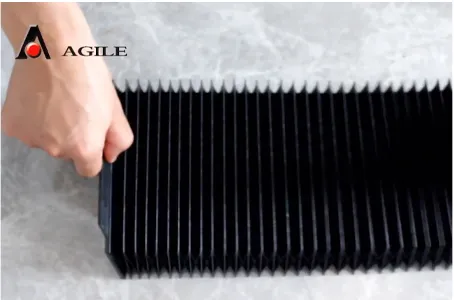Chip Removal System for CNC Machines to Enhance Efficiency and Cleanliness
The Importance of Chip Conveyors in CNC Machining
In the world of CNC (Computer Numerical Control) machining, efficiency and productivity are paramount. One of the often-overlooked components that significantly contribute to overall operational efficiency is the chip conveyor. These devices play a crucial role in maintaining a clean, safe, and efficient workspace by handling the waste material produced during the machining process.
What is a Chip Conveyor?
A chip conveyor is a mechanical device designed to collect and transport metal chips, shavings, and other debris generated during machining operations. Typically, these conveyors are integrated into CNC machines or placed in proximity to machining centers to facilitate the quick and effective removal of waste material. By continuously removing chips from the workspace, these systems help prevent bottlenecks and minimize machine downtime.
Enhancing Efficiency
CNC machining involves precise cutting and shaping of materials, which inevitably produces metal chips. If these chips are not managed properly, they can accumulate around the machine, leading to several issues such as obstructing the machining process, risking damage to the machine, and posing safety hazards for operators. Chip conveyors streamline this waste disposal process, allowing for uninterrupted workflow and enhanced productivity.
The efficiency gained from using chip conveyors can be significant. Operators can focus on the machining tasks without the distraction of manual clean-up, allowing for better time management and increased output. Furthermore, an organized workspace reduces the risk of accidents and promotes a safer working environment.
Types of Chip Conveyors
There are several types of chip conveyors, each designed for specific applications and types of machining operations. Some common types include
chip conveyor for cnc machine

1. Auger Conveyors These utilize a rotating helical screw to push chips along a tube. They are particularly effective for handling smaller chips and fine materials, making them suitable for applications with minimal coolant usage.
2. Drag Chain Conveyors This style employs a series of chains to pull chips along a trough. Drag chain conveyors are robust and suitable for heavy or large chips produced in machining operations involving tougher materials.
3. Magnetic Conveyors As the name suggests, these utilize magnetic forces to attract and move ferrous chips. This type is particularly advantageous when dealing with metalworking processes that generate small, ferrous chips.
4. Elevator Conveyors For situations where chips need to be transported vertically, elevator conveyors are employed. They help in transferring waste material to higher levels for disposal, enhancing space utilization in a workshop.
Environmental and Cost Considerations
In addition to efficiency, chip conveyors also play a role in reducing environmental impact. By automating the disposal of chips, companies can collect and recycle scrap metal more effectively, thereby reducing waste and promoting sustainability. With rising material costs, efficient recycling of metal chips can lead to significant economic savings.
Investing in chip conveyors can also reduce long-term operating costs associated with labor and maintenance. With automated chip handling, the need for manual labor decreases, allowing machinists to focus on core operational tasks. As a result, the initial investment in a good chip conveyor system can lead to substantial returns over time.
Conclusion
In conclusion, chip conveyors are an essential component of modern CNC machining operations. They not only enhance efficiency and productivity but also contribute to a safer work environment and promote sustainable practices. As manufacturing processes evolve and the demand for quality and efficiency increases, the role of chip conveyors will continue to be vital in the realm of CNC machining. By recognizing the importance of this infrastructure, manufacturers can ensure that they remain competitive and responsive in an increasingly demanding market.








